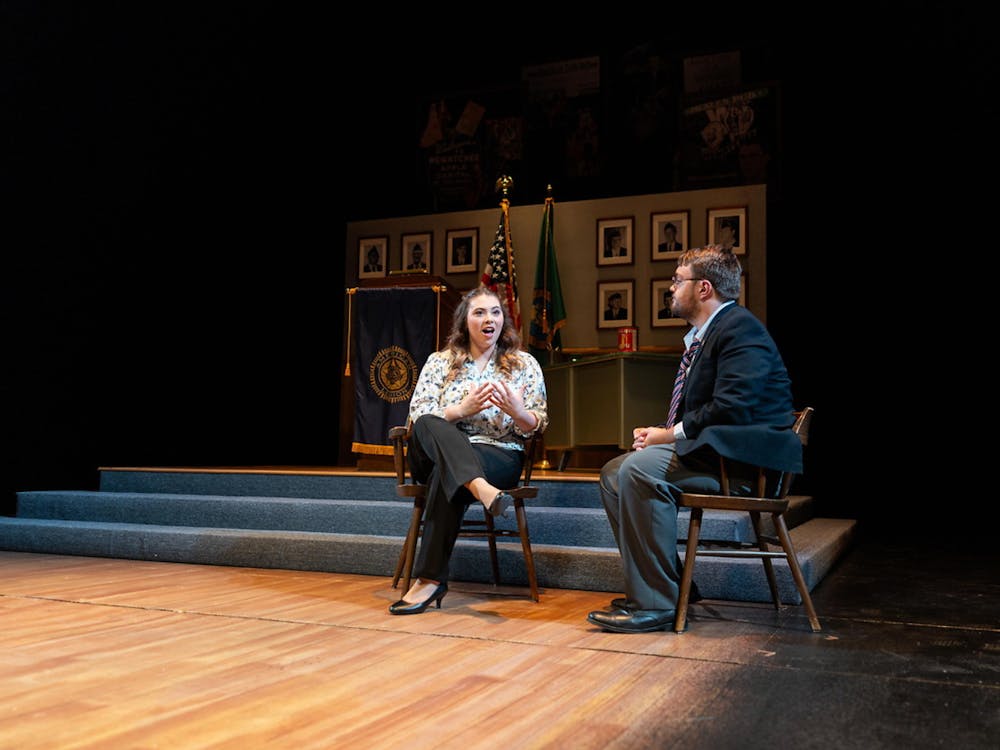"Your grandfather died last night."
For Joy Temper, the protagonist of the novella "Temper CA," these words do more than signal an end -- they resurface a past that she had spent years ignoring.
She did not have fond memories of her grandfather. Nor did she particularly want to return to his California mining town, Temper, where she spent turbulent childhood years.
Paul Skenazy, the author of "Temper CA" (published by Miami University Press in January 2019), knew that the novella's title signified Joy and the place with which she shares a name: "The image was of this girl... The more I saw her, I realized that I wasn't just telling her story. I was telling the story of the town."
Through concise and and vivid prose, Skenazy portrays Temper the town as a budding tourist site with an unavoidable history. As new real estate developments change the face of the town, its oldest residents fight for their mining roots. But those traditions carry a dark past, of Anglo-Americans stealing land from Californios, Chinese Americans and Chileans during the Gold Rush.
Temper's history is only part of the story, though. The rest involves Joy's exploration of her past. What led to the broken relationships between her grandfather and father? Father and mother? Was her parents' unorthodox lifestyle of her parents more harmful to her than she originally thought?
Combining both concepts into a single narrative is a challenge. "How do you add history and politics and still keep the story, pushing it forward?" Skenazy said in an interview. But as "Temper CA" shows, these concepts aren't as distinct as they seem.
"This is the consequence. We have a personal history and we have a public history. It became 'Temper CA' when the two meshed. It wasn't 'Temper' until the two could join."
For its intimate discussion relationships and family, the novella is as close to a page-turner as a quiet drama can get. This is thanks, in part, to a strange story about an earlier draft of the story. "At one point... I sent the book to a publisher who didn't want it," said Skenazy. "He literally wanted me to rewrite it as a thriller in which Joy kills her grandfather and blames her father. I actually tried to do that for a year."
The pulpy results left the author dissatisfied --"Everything was gratuitous. It felt like I was writing pornography" -- but it did imbue in his writing a sense of urgency, forward motion and energy. "I wanted an internal thriller, a psychological thriller of her discovery. I realized that I could do that with the mystery form."
The mystery unveils itself to Joy slowly. A duffel bag is found in an abandoned mine, the grandfather's cause of death raises questions, and old family and friends reference moments from Joy's past that she has forgotten or buried in her subconscious. In a rather unconventional layout, these mysteries can only be resolved with a journey through the past.
Enjoy what you're reading?
Signup for our newsletter
To do this, Skenazy employs one of the "Temper CA"'s most integral devices: pictures. "Photographs are at the heart of this book," he said. "[They] are a certain kind of memory. But they're frozen. They pretend to show you a landscape, but really, they close off a landscape. They frame a landscape. There are a zillion things going on outside of it."
When these pictures portray an image of the past that contradicts Joy's memory, they create some of the novella's most effective drama. "How do you have this vision -- which is like a photograph of a moment in time --yet at the same time, you know your memory is skewed? How do you penetrate the scene of the photograph itself and realize that, 'Everything I believed about that is kind of wrong?'"
Skenazy's exploration of this concept provides incredible depth for a relatively short read. "In the first part of the book, I had to give over to [Joy's] romanticism. And then kind of let it break apart," he said.
There's also the stories Joy is being told by those around her --their versions of what unfolded in the past, their justifications for their actions. Sometimes, those stories unveil a new kind of truth for Joy; just as often, they make it more confusing.
Talking about this topic, Skenazy mentions the 1950 film "Rashomon." In it, a bandit's hideous crimes against a samurai and his wife are replayed from the perspective of each party, as well as that of an observing woodcutter. None of the stories align, and each new retelling reveals something about its narrator. It's up to the viewer to determine the "truest" version of the story.
That structure was revolutionary for the time, spawning a term to describe similarly splintered stories: the Rashomon Effect. "Temper CA" utilizes this phenomenon. But the conflicting testimonies aren't always the result of deliberate, pernicious deceit. Instead, Skenazy uses them to reflect an essential characteristic of humanity: Our minds often play tricks on us, remembering things how we want them to be remembered.
"It's 'I see, you see, he sees,'" Skenazy said. "But you don't know what's there. It's just perceptions."
keelinst@miamioh.edu




